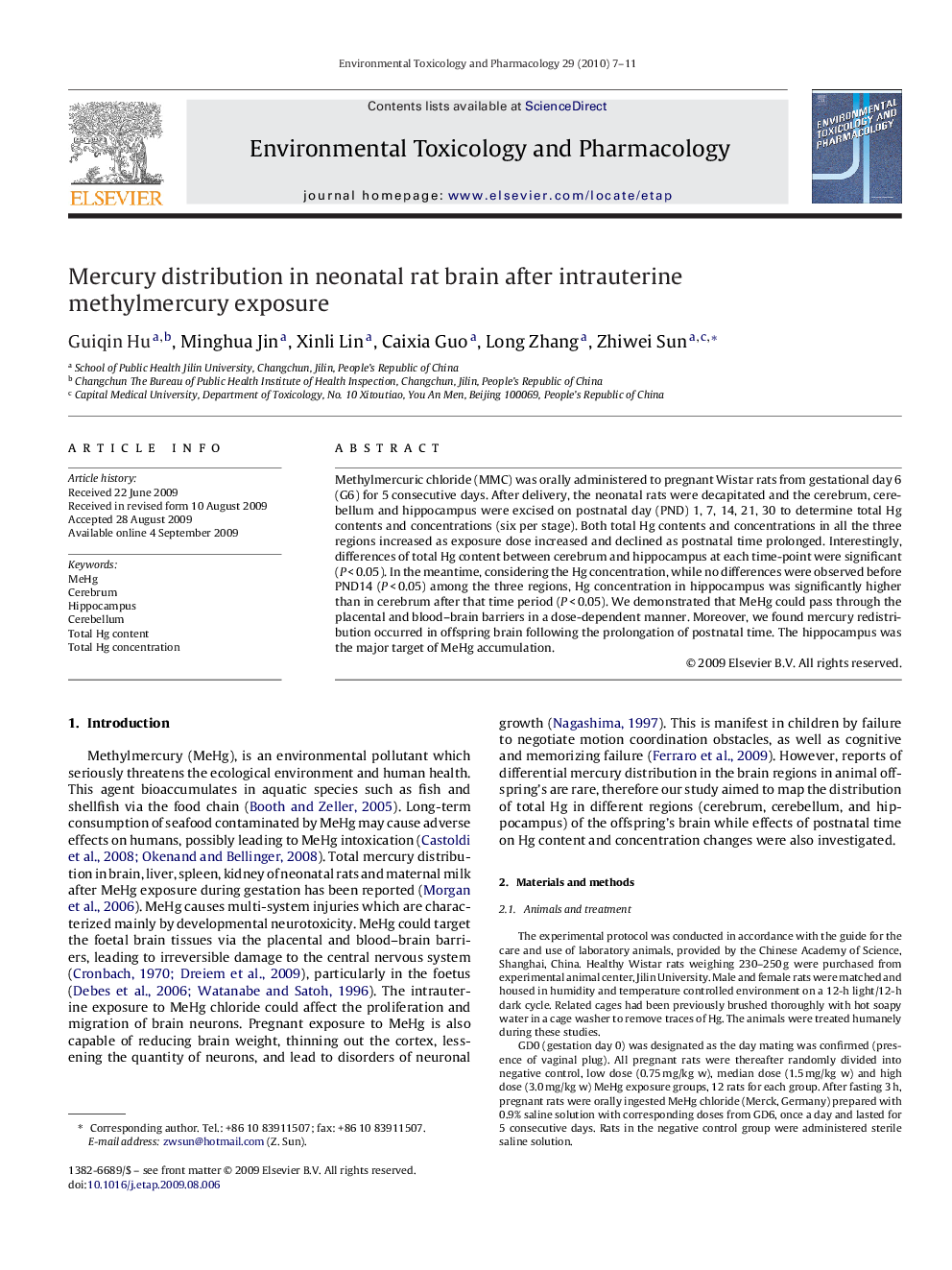| Article ID | Journal | Published Year | Pages | File Type |
|---|---|---|---|---|
| 2583698 | Environmental Toxicology and Pharmacology | 2010 | 5 Pages |
Abstract
Methylmercuric chloride (MMC) was orally administered to pregnant Wistar rats from gestational day 6 (G6) for 5 consecutive days. After delivery, the neonatal rats were decapitated and the cerebrum, cerebellum and hippocampus were excised on postnatal day (PND) 1, 7, 14, 21, 30 to determine total Hg contents and concentrations (six per stage). Both total Hg contents and concentrations in all the three regions increased as exposure dose increased and declined as postnatal time prolonged. Interestingly, differences of total Hg content between cerebrum and hippocampus at each time-point were significant (PÂ <Â 0.05). In the meantime, considering the Hg concentration, while no differences were observed before PND14 (PÂ <Â 0.05) among the three regions, Hg concentration in hippocampus was significantly higher than in cerebrum after that time period (PÂ <Â 0.05). We demonstrated that MeHg could pass through the placental and blood-brain barriers in a dose-dependent manner. Moreover, we found mercury redistribution occurred in offspring brain following the prolongation of postnatal time. The hippocampus was the major target of MeHg accumulation.
Keywords
Related Topics
Life Sciences
Environmental Science
Health, Toxicology and Mutagenesis
Authors
Guiqin Hu, Minghua Jin, Xinli Lin, Caixia Guo, Long Zhang, Zhiwei Sun,
